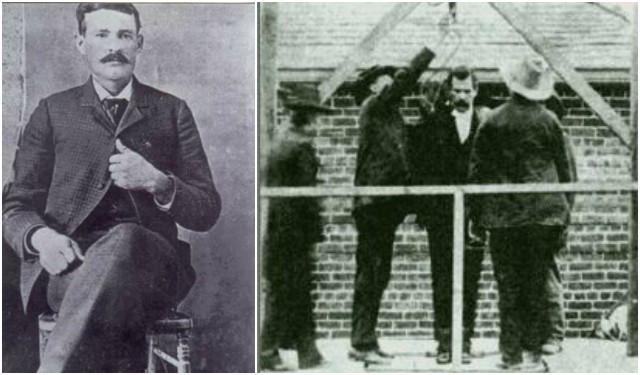The Wild West was not by any means a peaceful era. It was full of notorious gunslingers and outlaws who wouldn’t think twice before placing a bullet in someone’s head for even the slightest provocation.
There are countless stories and unsolved mysteries of the Wild West era, and Hollywood sure did spice them up for its movies. Romanticized and glorified by movie studios, the many outlaws and lawmen of this particular era became an integral part of pop culture and their stories continue to captivate audiences.
Nowadays there are many places throughout the United States where one can still experience the legendary mystique of the era, but only a few of them can match the Wild West legends of New Mexico, where such men as Elfago Baca, Buckshot Roberts, Pat Garrett, Billy the Kid, Charlie Bowdre, and “Black Jack” Ketchum left their marks.
An unforgettable story comes from the town of Clayton, New Mexico, which is the site of perhaps the clumsiest hanging in the history of the Wild West, that of a man known as “Black Jack” Ketchum.

It was April 26, 1901, when train robber Thomas Edward Ketchum, later known as Black Jack, was hanged in the town of Clayton. Ever since that fateful day, the sad, twisted tale of one of the last outlaws of the Wild West has captured the imagination of historians and Wild West enthusiasts alike.
The officials in Clayton were not that experienced with the practice of hanging criminals: Ketchum was the first one to be sentenced to death by hanging. Their inexperience would lead to poor Black Jack Ketchum not dying in the usual manner, from breakage of the neck vertebrae, but from decapitation because the rope used for his execution was too long and as rigid as wire.
Thomas Edward Ketchum experienced a difficult childhood. He lost both his parents while still young and had to work as a cowboy together with his brother on various ranches across Texas and New Mexico. However, he put an end to his cowboy career in 1892 when he chose a life of crime.
Working as a cowboy had its advantages and when Ketchum entered the world of crime he already knew the territory of Texas and New Mexico. Together with his brother Sam and several more outlaws, they formed a gang and their luck smiled when they robbed a train in Nutt, New Mexico. The gang made off with $20,000.

Ketchum’s first more serious crime occurred in 1895, when he killed John N. “Jap” Powers in Tom Green County, Texas. After the murder, Ketchum and his gang fled to New Mexico, where they committed several more robberies before most of the members, including Ketchum’s brother, were either arrested or killed.
August 16, 1899, was a date of great importance for Ketchum as it was on that day that he made one final and unsuccessful attempt to rob a train. Sadly for him, the conductor recognized him and immediately shot him in the right elbow. It didn’t take long before the authorities arrived and arrested the notorious train robber. Soon he was taken to the town of Clayton where he was put on trial, found guilty, and sentenced to death by hanging.
Authorities delayed the hanging on several occasions, but a final decision had to be made after people started spreading rumors that some of Ketchum’s old friends might try to free him. The hanging was scheduled for April 26, 1901.

When the day came, the hanging was the biggest attraction in the entire area, with many people coming from far away to see the execution themselves. Ketchum was soon to become the first person hanged for train robbery in New Mexico. However, it did not proceed as smoothly as planned.
The night before the hanging was scheduled, an official tested the rope with a 200-pound sandbag, but he forgot to remove it and its weight made the rope as rigid as wire. This caused an immediate decapitation, and it is said that Black Jack’s headless body landed on its feet and remained upright for some time.
Prior to burial, the townsfolk sewed his head onto his body and buried him at Clayton’s Boothill.
